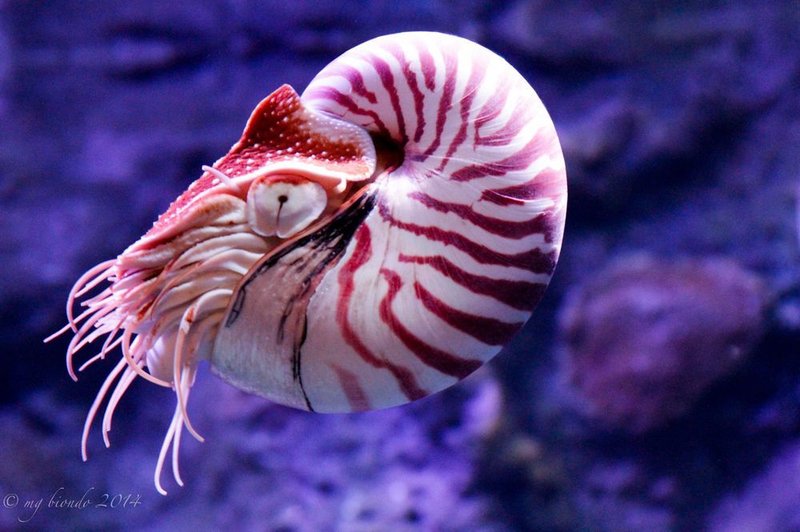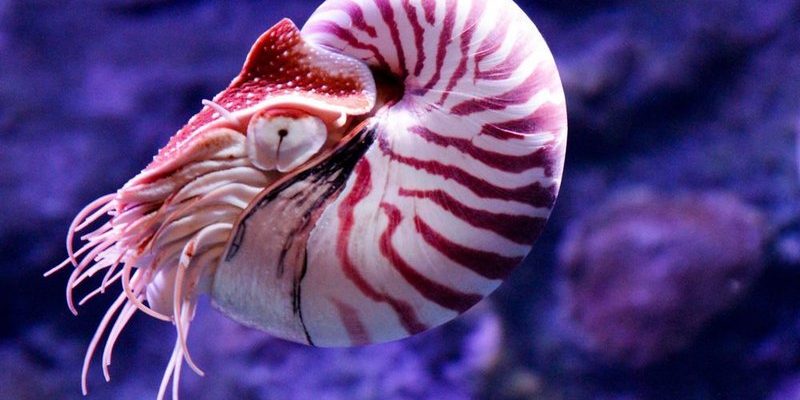
Imagine a creature that has been gliding through the oceans for over 500 million years, a true survivor from a time when dinosaurs were just a twinkle in the eye of evolution. This ancient marvel, known as the Chambered Nautilus, is like a living fossil, providing us with a remarkable glimpse into our planet’s distant past. With its beautiful spiral shell and fascinating biology, the Chambered Nautilus is not just amazing to look at; it’s a storybook of evolution.
The Chambered Nautilus is often likened to a tiny submarine, equipped with a gas-filled chamber that allows it to navigate the depths of the ocean with ease. These creatures may look delicate, but they are remarkably resilient, having existed in various forms during periods when life on Earth was dramatically different. As we explore their unique adaptations and behaviors, you’ll see why these cephalopods continue to capture the imagination of scientists and enthusiasts alike.
What is a Chambered Nautilus?
The Chambered Nautilus belongs to a group of marine animals known as cephalopods, which also includes squids, octopuses, and cuttlefish. What sets the Chambered Nautilus apart from its relatives is its hard, coiled shell. This stunning shell is divided into chambers, which the nautilus uses to help control its buoyancy and navigate the ocean with grace.
While they might seem like simple sea creatures, Chambered Nautiluses are actually highly specialized. They are equipped with numerous traits that have allowed them to thrive in their oceanic environment. Their ability to adapt to changing conditions is one of the reasons they have persisted for such a long timespan, making them a vital study subject for understanding evolution.
Physical Characteristics
At first glance, the Chambered Nautilus might remind you of a beautiful seashell. Its spiraled shell can reach up to 10 inches in diameter, showcasing a stunning range of colors including shades of white, gold, and cream. The shell is not just for decoration; it serves several vital functions. The internal chambers allow this creature to control its buoyancy, giving it the ability to rise and fall in the water column effortlessly.
Internally, the nautilus has a soft body that is not as equipped as its more advanced cephalopod relatives like octopuses and squids. Instead, it has numerous tentacles surrounding its mouth, which it uses to capture prey. Interestingly, these tentacles don’t have suckers like other cephalopods. Instead, they’re lined with small grooves that help grasp food items.
Habitat and Distribution
The Chambered Nautilus is primarily found in the warm waters of the Pacific and Indian Oceans. They tend to inhabit depths of about 300 to 800 feet but can be found as deep as 2,000 feet. These depths offer them a cooler environment, which is essential for their survival. You might not think of these creatures as being picky, but they do prefer to dwell in specific areas where they can find ample food supply.
Living in the open ocean, nautiluses are often drawn to regions rich in coral reefs and abundant marine life. The Chambered Nautilus feeds on small fish, crustaceans, and other sea creatures, using its sensitive tentacles to detect prey. Their habitat choice is strategically linked to their survival, as they need both protection from predators and access to a steady food supply.
Behavior and Diet
Chambered Nautiluses are primarily nocturnal, which means they are most active at night. During the day, they prefer to stay in deeper waters, using their buoyancy to rest in calmer currents. At night, they swim closer to the surface to hunt. This behavior also helps them avoid potential predators that might be searching for them during daylight hours.
When it comes to feeding, the nautilus has an interesting strategy. It uses its tentacles to sense and capture prey, typically small crustaceans and fish. It has a keen ability to locate food, which is crucial for its survival in the vast ocean. The nautilus draws its prey close, then uses its beak-like mouth to consume it. This dining experience may seem quiet and unassuming, but it’s a vital part of the nautilus’s life cycle.
Reproduction and Lifespan
Reproduction in the Chambered Nautilus is quite fascinating. Females lay around 10 to 30 eggs at a time, which they attach to the ocean floor or under rocks for protection. Unlike many other marine creatures, these eggs have a longer gestation period, taking about 6 to 12 months to hatch. When baby nautiluses emerge, they are miniature versions of their parents, ready to explore their surroundings immediately.
The lifespan of a Chambered Nautilus can be quite impressive, with some individuals living up to 20 years. This longevity adds to their allure as a living fossil, representing a connection to a much older world. However, like many marine species, they face threats from environmental changes and human activities, making their future uncertain.
Interesting Facts about Chambered Nautilus
| Scientific Name: | Nautilus pompilius |
| Size: | About 10 inches in diameter |
| Weight: | Up to 5.5 lbs (2.5 kg) |
| Habitat: | Pacific and Indian Oceans |
| Diet: | Small fish and crustaceans |
| Lifespan: | Up to 20 years |
The Role of Chambered Nautilus in Ecosystems
The Chambered Nautilus plays a crucial role in marine ecosystems. As both predator and prey, it helps maintain the balance of life in the ocean. By feeding on small fish and crustaceans, nautiluses help control these populations. In turn, they become an important food source for larger marine predators, such as sharks and other fish.
Additionally, the nautilus contributes to the cycling of nutrients in the ocean. When it consumes prey, it helps break down organic matter, returning nutrients back into the ecosystem. This process is essential for the health of ocean habitats, highlighting the interconnectedness of marine life and the importance of even the smallest creatures.
Conservation Status
Unfortunately, the Chambered Nautilus faces various threats from human activities, such as overfishing and habitat destruction. As a result, the species is classified as “Near Threatened” by the International Union for Conservation of Nature (IUCN). Its slow reproduction rate makes recovery difficult, which is a concern for conservationists.
Efforts are being made to protect this unique creature and its habitat. Organizations are working on raising awareness about the importance of marine conservation, but there’s still a long way to go. As these ancient creatures continue to roam our oceans, we must do our part to ensure their survival for future generations.
The Chambered Nautilus is more than just a pretty shell; it’s a symbol of resilience and evolution. As we dive deeper into understanding this incredible creature, we uncover not just facts about its life but also insights into our planet’s history. It reminds us of the delicate balance of life in our oceans and the responsibility we share in protecting it.
FAQ
What family does the Chambered Nautilus belong to?
The Chambered Nautilus belongs to the family Nautilidae. This family consists of several species known for their coiled shells and unique adaptations. They are one of the few remaining representatives of their ancient lineage, making them an important focus for studying cephalopod evolution and history.
How does the Chambered Nautilus control its buoyancy?
Control of buoyancy is achieved through the chambers within its shell. By adjusting the gas and liquid within these chambers, the nautilus can rise or sink in the water. This remarkable ability allows it to navigate different depths while conserving energy, making it a highly efficient swimmer.
What predators do Chambered Nautiluses have?
Despite being somewhat protected by their hard shells, Chambered Nautiluses have natural predators. Larger fish and sharks view them as a potential meal. While adult nautiluses can sometimes evade these predators through their buoyancy and deep-water habitat, young nautiluses are more vulnerable.
Can you keep a Chambered Nautilus as a pet?
While it might be tempting to keep such a unique creature as a pet, it’s important to note that Chambered Nautiluses require specific conditions to thrive. They need large, well-maintained aquariums with precise water quality and temperature. Additionally, keeping them in captivity raises ethical concerns regarding their well-being.
What is the primary diet of a Chambered Nautilus?
The primary diet of a Chambered Nautilus consists of small fish, crustaceans, and other marine organisms. They are adept at hunting and using their tentacles to capture prey, demonstrating a specialized feeding strategy that has served them well throughout their evolution.
How does the Chambered Nautilus reproduce?
Reproduction involves laying eggs, which females attach to the ocean floor or rocky surfaces for protection. This method ensures that the eggs are kept safe until they hatch into miniature versions of their parents. The long gestation period allows for optimal development of the young nautiluses.
Why is the Chambered Nautilus considered a “living fossil”?
The Chambered Nautilus is often referred to as a “living fossil” because it has remained relatively unchanged for millions of years. Its body plan and shell structure have been remarkably stable over time, providing valuable insights into evolutionary history and the resilience of life.
What are the biggest threats to the Chambered Nautilus?
The biggest threats to the Chambered Nautilus include overfishing, habitat destruction, and environmental changes due to climate change. These factors have led to concerns about their long-term survival, prompting conservation efforts to protect their populations and habitats.
What is the average size of a Chambered Nautilus?
Chambered Nautiluses can grow to be about 10 inches in diameter, although sizes can vary slightly among different species. This size allows them to navigate effectively in the ocean while offering some protection from predators due to their hard shell.
Are there different species of Nautilus?
Yes, there are several different species of Nautilus, including the Pacific Nautilus and the Allonautilus species. Each has unique characteristics, but they share many similarities in behavior and habitat preferences. Studying these variations helps scientists understand the evolutionary biology of this group.

